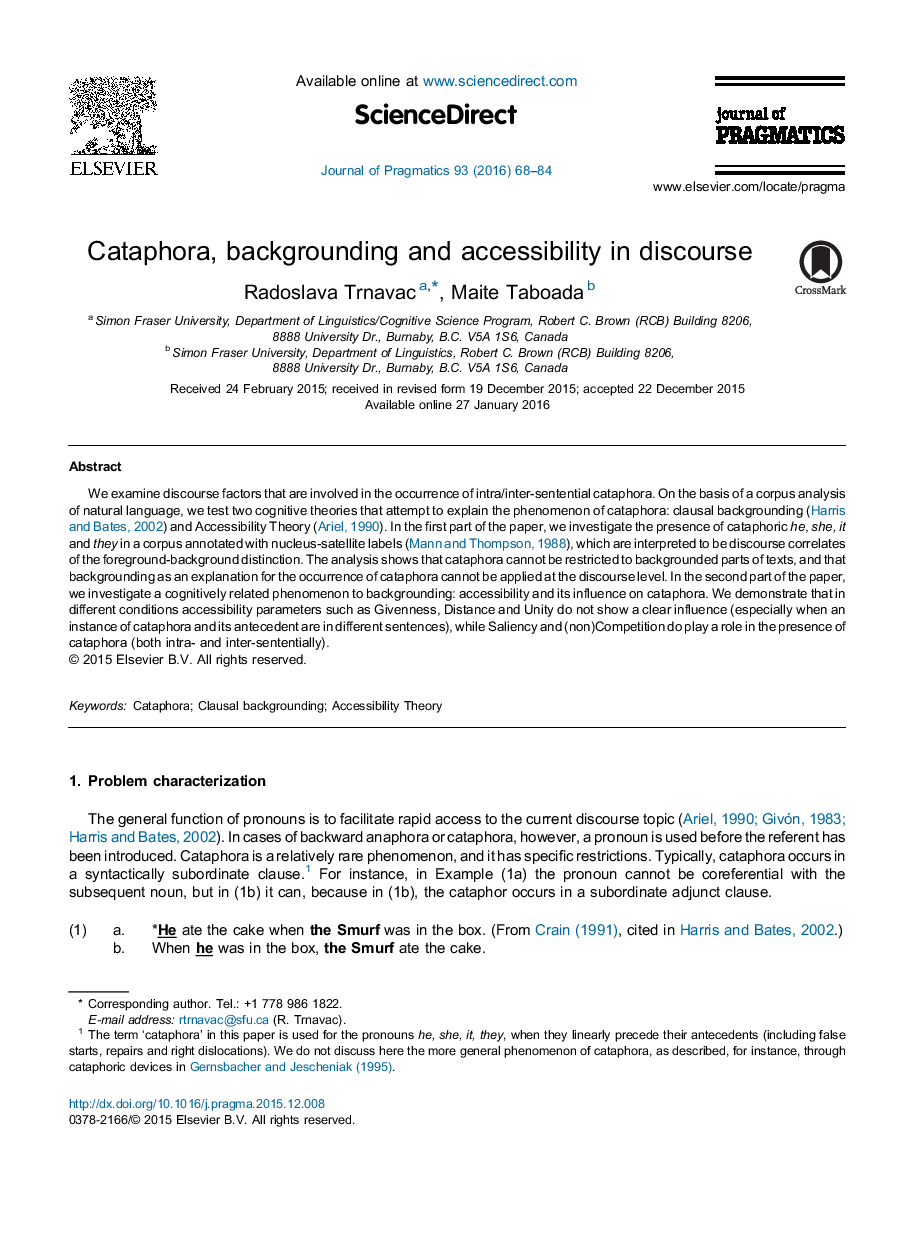| Article ID | Journal | Published Year | Pages | File Type |
|---|---|---|---|---|
| 932510 | Journal of Pragmatics | 2016 | 17 Pages |
•Cataphora is not exclusively found in backgrounded parts of texts, as previously postulated.•Cataphora is not dependent on the parameters of Givenness, Distance and Unity from Ariel's Accessibility Theory.•Saliency and (non)Competition play a role in the presence of cataphora.•Cataphora accounts for only a very small percentage of third-person pronouns, and occurs in very different contexts.
We examine discourse factors that are involved in the occurrence of intra/inter-sentential cataphora. On the basis of a corpus analysis of natural language, we test two cognitive theories that attempt to explain the phenomenon of cataphora: clausal backgrounding (Harris and Bates, 2002) and Accessibility Theory (Ariel, 1990). In the first part of the paper, we investigate the presence of cataphoric he, she, it and they in a corpus annotated with nucleus-satellite labels ( Mann and Thompson, 1988), which are interpreted to be discourse correlates of the foreground-background distinction. The analysis shows that cataphora cannot be restricted to backgrounded parts of texts, and that backgrounding as an explanation for the occurrence of cataphora cannot be applied at the discourse level. In the second part of the paper, we investigate a cognitively related phenomenon to backgrounding: accessibility and its influence on cataphora. We demonstrate that in different conditions accessibility parameters such as Givenness, Distance and Unity do not show a clear influence (especially when an instance of cataphora and its antecedent are in different sentences), while Saliency and (non)Competition do play a role in the presence of cataphora (both intra- and inter-sententially).
